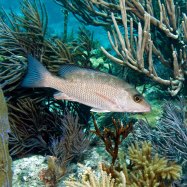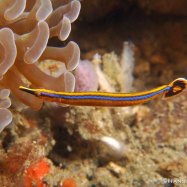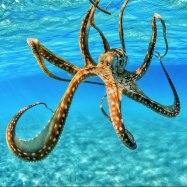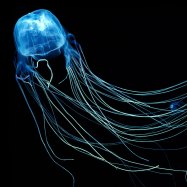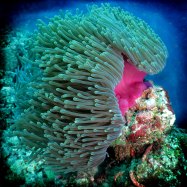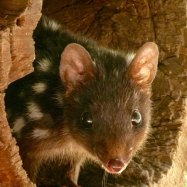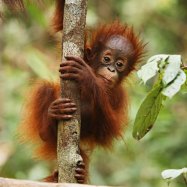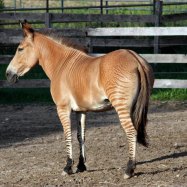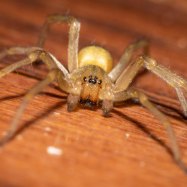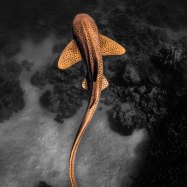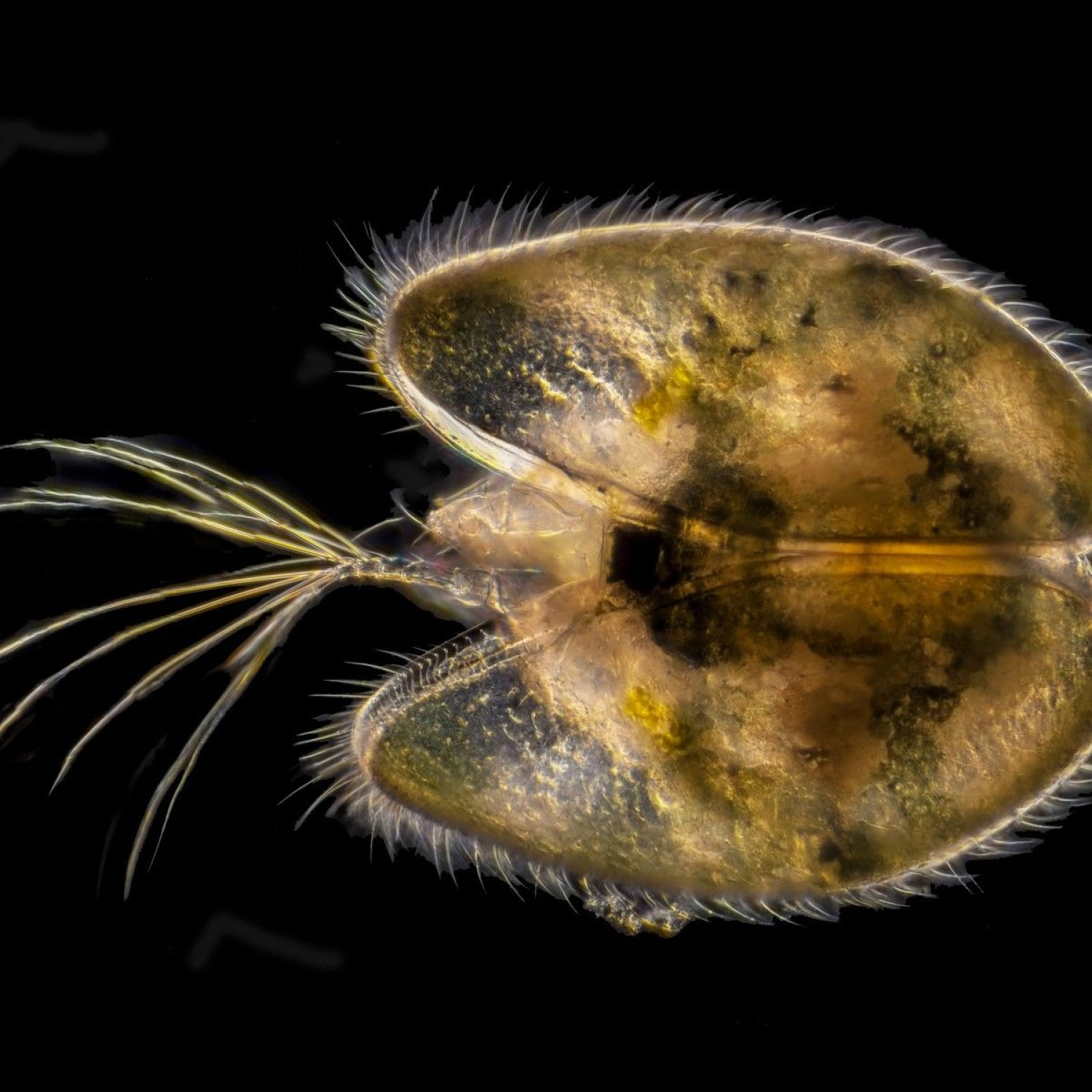
Ostracod
0.2 to 3 millimeters
The tiny ostracod may not be as well-known as other sea creatures, but these tiny bivalve shell-dwelling animals are fascinating to study. Ranging from 0.2 to 3 millimeters, they can be found around the world and belong to the Cytherideidae family. Keep an eye out for these microscopic marvels on your next beach trip!
Animal Details Summary:
Common Name: Ostracod
Kingdom: Animalia
Habitat: Freshwater and marine environments
The Small and Fascinating World of Ostracods
Nestled in the depths of oceans, lakes, and even puddles, lives a tiny but fascinating creature – the ostracod. This small, crustacean-like arthropod has caught the attention of scientists and nature lovers alike, with its unique physical attributes and behavior. While their size may be minuscule, their importance in aquatic ecosystems is massive. Let's take a deep dive into the world of ostracods and discover what makes them so intriguing Ostracod.What are Ostracods?
Ostracods, scientific name Ostracoda, are a class of small, bivalved crustaceans found in both freshwater and marine environments. They belong to the phylum Arthropoda, making them distant relatives of insects, spiders, and crustaceans like shrimp and crabs. With over 20,000 known species, ostracods are one of the most abundant organisms on the planet, living in nearly every body of water worldwide.Physical Characteristics
Ostracods are incredibly small, with adults measuring between 0.2 to 3 millimeters in length. Some species are even smaller and can only be seen under a microscope. Their tiny size makes them elusive and challenging to study, but advancements in technology have allowed scientists to unravel the mysteries of these fascinating creatures.One of the most distinctive physical characteristics of ostracods is their bivalved shell, which gives them a clam-like appearance. The two halves of their shell, called valves, are held together by a hinge and muscles that allow the ostracods to open and close their shell Owlfly. The shell has a variety of shapes and patterns, depending on the species and their environment.
Habitat and Distribution
Ostracods are highly adaptable creatures, and as a result, they can survive in a wide range of environments. They can be found in oceans, lakes, rivers, and even temporary bodies of water like puddles. Some species can also tolerate extreme conditions such as hot springs, cold underwater caves, and even brackish water.These small crustaceans are not just found in one corner of the world but are globally distributed, with species living in almost every country. You can find ostracods in Europe, Africa, Asia, North and South America, and even the polar seas. They play an essential role in the ecosystem, feeding on algae and bacteria, and serving as a food source for larger animals.
Feeding Method
Ostracods are filter feeders, meaning they consume microorganisms and suspended particles by filtering them out of the water. They have a complex feeding apparatus made up of mouthparts and appendages that sweep water into their shell and directs it towards their mouth. Some species have specialized hairs or bristles on their appendages that help trap food particles.Their role as filter feeders is crucial in maintaining the balance of nutrients and microorganisms in their environment. By consuming large quantities of algae and bacteria, ostracods prevent them from overpopulating and maintain a healthy balance in the aquatic ecosystem.
Behavior and Reproduction
Ostracods are nocturnal creatures, meaning they are most active at night. During the day, they bury themselves in sediment or hide under rocks, making it challenging to observe their behavior. However, studies have shown that they are excellent swimmers and can move freely in the water using their limbs.These tiny creatures have a short lifespan, with most species only living for about six months. However, they make up for it by their high reproductive rate. Female ostracods can lay up to 50 eggs at a time, which quickly hatch and reach adulthood within a few weeks. Some species also reproduce asexually, meaning they can produce offspring without a mate.
The Fascinating World of Ostracods
While ostracods may be small, their impact on the ecosystem is massive. They play a vital role in cycling nutrients, improving water quality, and providing a food source for larger animals. Researchers are also studying ostracods for their potential medical applications, such as their ability to produce compounds that may have antibacterial and anti-cancer properties.Their unique shell patterns and shapes have also caught the interest of collectors, making ostracods a popular subject in the field of amateur microscopy. Some species are translucent, allowing you to see the internal organs, while others have bright colors, making them visually appealing under a microscope.
In Conclusion
With their tiny size, diverse distribution, and intriguing physical attributes, ostracods are truly one of nature's wonders. Despite being often overlooked, these small crustaceans play a significant role in maintaining the health of our water bodies. As we continue to learn more about these fascinating creatures, we'll undoubtedly discover more reasons to be amazed by their small but mighty presence in our oceans, lakes, and rivers.

Ostracod
Animal Details Ostracod - Scientific Name: Ostracod
- Category: Animals O
- Scientific Name: Ostracod
- Common Name: Ostracod
- Kingdom: Animalia
- Phylum: Arthropoda
- Class: Ostracoda
- Order: Myodocopida
- Family: Cytherideidae
- Habitat: Freshwater and marine environments
- Feeding Method: Filter feeders
- Geographical Distribution: Worldwide
- Country of Origin:
- Location:
- Animal Coloration: Varies depending on the species
- Body Shape: Bivalve shell
- Length: 0.2 to 3 millimeters
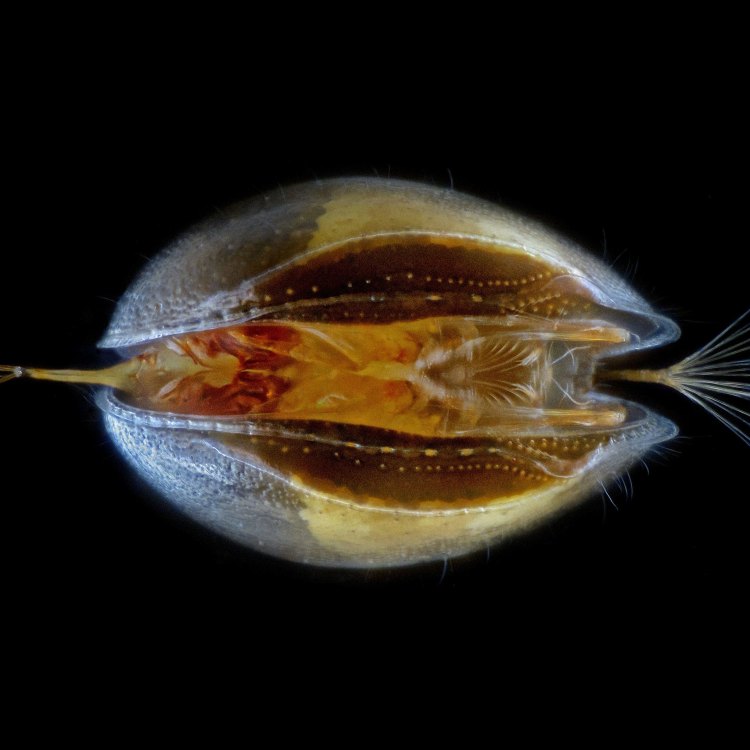
Ostracod
- Adult Size: 0.2 to 3 millimeters
- Average Lifespan: Up to a few weeks
- Reproduction: Sexual reproduction
- Reproductive Behavior: Mating occurs through the exchange of sperm packets
- Sound or Call: None
- Migration Pattern: No significant migration
- Social Groups: Some species form colonies
- Behavior: Sessile or free-swimming
- Threats: Habitat loss, pollution, and climate change
- Conservation Status: Not evaluated
- Impact on Ecosystem: Important in aquatic food chains
- Human Use: Used as indicators of environmental health
- Distinctive Features: Bivalve shell, small size
- Interesting Facts: There are thousands of known species of ostracods
- Predator: Served as food for various organisms
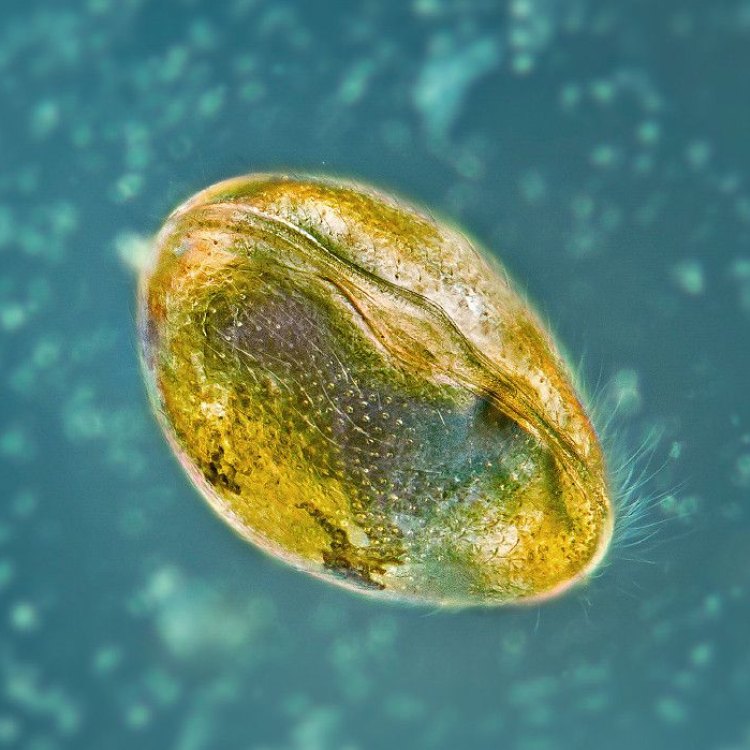
Ostracod
The Fascinating World of Ostracods: Tiny Masters of the Aquatic World
Hidden within our vast oceans, lakes, and even underground water systems, lives a diverse and often overlooked group of creatures known as ostracods. These minuscule crustaceans, barely visible to the naked eye, play a significant role in shaping our aquatic ecosystems and are a crucial indicator of environmental health. With thousands of known species and unique features, ostracods are truly some of the most fascinating organisms in the natural world.Ostracods, also known as seed shrimps, are a diverse group of crustaceans belonging to the class Ostracoda PeaceOfAnimals.Com. They range in size from a mere 0.2 to 3 millimeters in length, making them one of the smallest animals on the planet. Despite their tiny size, these creatures have a complex and interesting life cycle, behavior, and role in the ecosystem.
The average lifespan of an ostracod is relatively short, lasting only a few weeks. However, within this short time, they play an essential role in the environment, providing food for various organisms and serving as indicators of environmental health.
One of the most striking features of ostracods is their reproductive behavior. These tiny creatures engage in sexual reproduction, where males transfer sperm packets to females through a unique structure called a copulatory organ. This process occurs during mating, which can take place multiple times during a female's lifespan.
Unlike many other organisms, ostracods do not produce any sounds or calls Ocelot. They communicate primarily through chemical signals, which allow them to find potential mates and detect predators in their environment.
When it comes to migration, ostracods do not exhibit significant movement patterns. They are generally sessile, meaning they remain attached to a surface or substrate, or they can be free-swimming, drifting along with the ocean currents. However, some species may show slight movements to find more suitable habitats or escape from unfavorable conditions.
Although ostracods are mostly solitary creatures, some species do form colonies. These colonies can range from a few individuals to large groups living together in close proximity. The reasons for this behavior remain a mystery, but it is believed that it could provide some benefits, such as protection from predators or more efficient feeding.
Ostracods can be found in a wide range of habitats, from shallow waters to the deep sea, and even in underground water systems. As a result, they have adapted to different environments and can exhibit different behaviors depending on their surroundings. Some species are sessile, attaching themselves to various surfaces, such as rocks or plants, while others are free-swimming, actively moving through the water.
Unfortunately, like many other organisms, ostracods face numerous threats in their natural habitats. Habitat loss, water pollution, and climate change are all major concerns for these tiny creatures. As aquatic species, they are particularly vulnerable to the impacts of pollution, which can directly affect their well-being and also disrupt their food sources and habitats.
Despite these threats, ostracods have not yet been evaluated for their conservation status. This is mainly due to the lack of research and limited knowledge about their distribution and population numbers. However, there is increasing recognition of the importance of these tiny creatures in aquatic ecosystems, and efforts are being made to study them further and implement conservation measures.
So, why should we care about these tiny creatures? Ostracods may be small, but they play a critical role in aquatic food chains. They are a vital food source for many organisms, including fish, birds, and other invertebrates. Without ostracods, these higher species would struggle to survive, and it would have a significant impact on the entire ecosystem.
Moreover, ostracods are used as indicators of environmental health. Due to their sensitivity to changes in their environment, they can act as sentinels, reflecting the overall condition of the ecosystem they inhabit. When researchers study ostracods, they can gain insights into the impact of human activities on aquatic environments and potential threats to other species.
Apart from their ecological significance, ostracods also have a surprising human use. Due to their sensitivity to environmental changes, they are used as bioindicators in studies of water quality and pollution. By monitoring ostracod populations, researchers can assess the health of the water and identify potential risks to human health. They also have a role in the field of paleontology, as their bivalve shells can serve as important microfossils, providing evidence of past environments and climates.
In addition to their ecological and scientific importance, ostracods are also just simply intriguing creatures. Their small size, unique reproductive behavior, and ability to adapt to different environments make them a species worthy of study and admiration. Their distinctive features, such as their bivalve shells and tiny size, are what make them stand out and capture our curiosity.
Did you know that there are thousands of known species of ostracods? Despite their small size and often overlooked status, ostracods are an incredibly diverse group. They can be found in almost every aquatic environment, from freshwater lakes to the abyssal depths of the ocean. Each species has its own unique adaptations and behaviors, making it a fascinating subject for scientists and nature enthusiasts alike.
Like most other creatures, ostracods also have predators. Due to their small size, they are preyed upon by various organisms, including fish, birds, and other invertebrates. However, this does not seem to be a significant threat to their populations, as they have a rapid reproductive cycle, allowing them to repopulate quickly.
In conclusion, ostracods may be considered tiny, insignificant creatures by some, but they play a crucial role in shaping our aquatic ecosystems. With their unique features, behaviors, and diverse species, they deserve more recognition and attention. As we continue to face challenges such as pollution and climate change, it is essential to protect and conserve these tiny masters of the aquatic world. Without them, the delicate balance of our oceans and lakes would be greatly disrupted, having far-reaching consequences for the health of our planet. So, let's appreciate and acknowledge these tiny yet mighty creatures, and continue to learn more about them to ensure their survival for generations to come.

The Small and Fascinating World of Ostracods
Disclaimer: The content provided is for informational purposes only. We cannot guarantee the accuracy of the information on this page 100%. All information provided here may change without prior notice.


